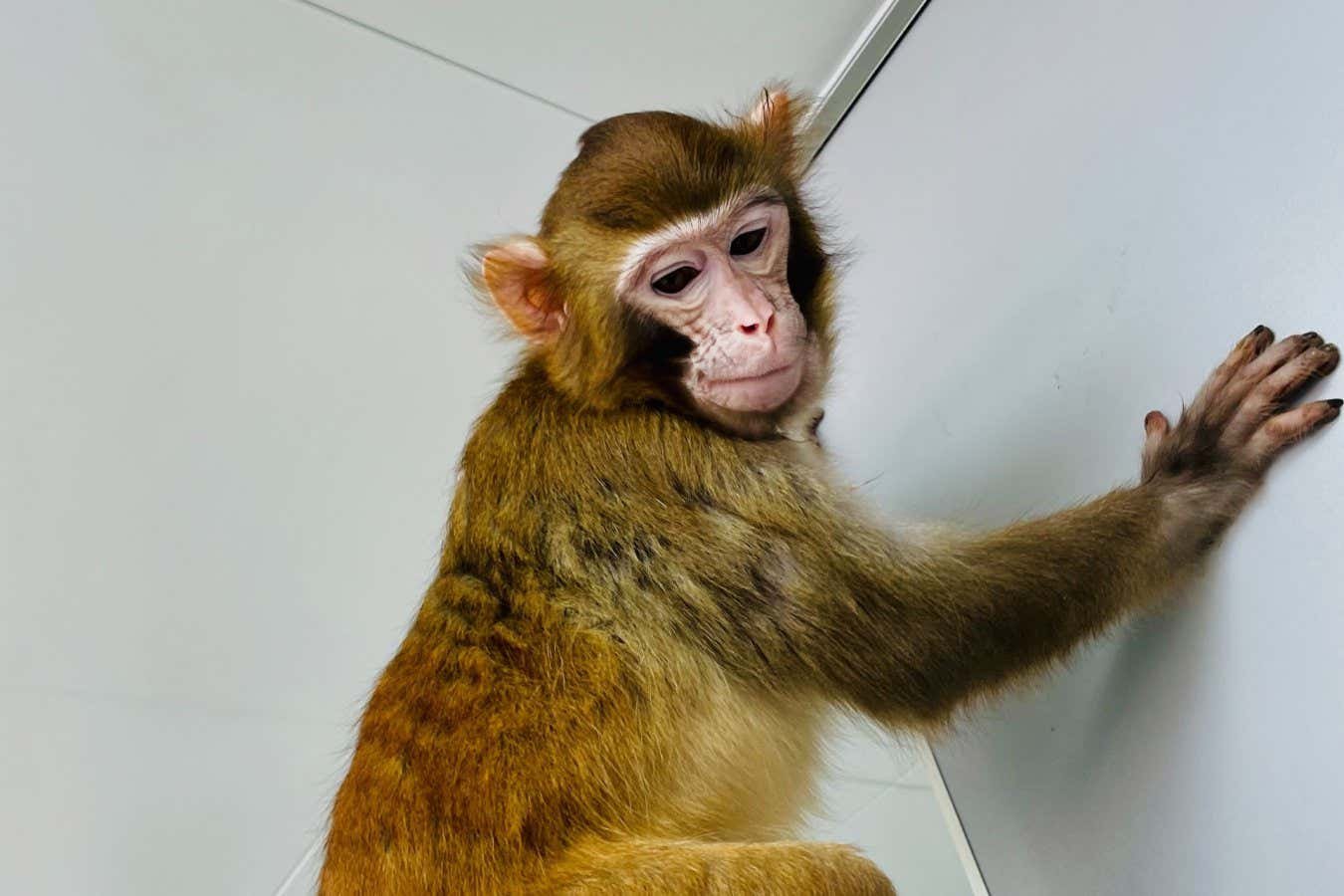
The cloned rhesus monkey
Zhaodi Liao et al.
After numerous attempts over the years, a healthy rhesus monkey has finally been created by cloning. The clone was born in China on 16 July 2020, but its existence has only now been revealed.
“The cloned rhesus monkey has reached the age of 3,” says team member Falong Lu at the Chinese Academy of Sciences in Beijing. “So far, we haven’t observed any health issues in it by our routine physical check-ups.”
However, the monkey was cloned from fetal cells, rather than adult cells, and the embryo had to be provided with a non-cloned placenta. So despite this advance, cloning primates remains extremely challenging. As a result, it still might not be technically possible to create a clone of an adult human being, quite apart from the ethical and legal issues.
Cloning is the creation of an individual that is genetically identical to another individual. It is simple to clone plants, but with most animals, it is far trickier.
The first mammal to be cloned from an adult cell, Dolly the sheep, was born in 1996. Since then, researchers have tried cloning many mammal species with mixed results.
In a few, cloning works relatively well. One team in South Korea has cloned more than 1500 dogs so far, for instance, though the success rate remains low: less than 4 per cent of the cloned embryos result in a live birth. With many other mammal species, cloning fails altogether or produces unhealthy animals.
The main problem is that as cells in the body develop and specialise, various so-called epigenetic markers get added to their DNA to turn certain genes on or off. When an adult cell is cloned by putting it in an empty egg, it usually has the wrong epigenetic markers.
Primates – the group including monkeys as well as apes such as humans – have proved particularly tricky. While there have been several previous reports of cloned monkeys, in every case so far there have been big caveats.
For instance, a rhesus monkey born in 1999 is sometimes described as the first primate clone, but this individual was created by splitting an embryo – as happens during the creation of identical twins – rather than by cloning an adult cell as with Dolly.
In 2022, the birth of a rhesus monkey cloned from a genetically modified adult was reported, but this clone died soon after birth.
The most successful attempt until now was the birth of two long-tailed macaques in 2017. The researchers behind this work used a chemical cocktail to help reset the epigenetic markers, but were still able to clone only fetal cells, not adult ones.
Lu’s team tried applying the same cocktail to rhesus macaques, but the only clone born this way didn’t survive. The researchers concluded that abnormalities in the cloned placentas were partly to blame, so they developed a new technique that involves transferring the part of an early embryo that turns into the fetus – the inner cell mass – into a non-cloned embryo from which the inner cell mass has been removed.
This means the cloned fetus develops inside a non-cloned placenta that is genetically different to it. In theory, the resulting fetus could be a mix of cloned and non-cloned cells, but the team found no evidence of such chimerism.
Even with the help of this intricate technique, however, the team has so far cloned only fetal cells, not adult ones. In other words, no healthy primate has yet been created by the cloning of adult cells.
This means it remains an open question whether it is possible to make a clone of an adult human. Lu wouldn’t speculate about whether his team’s technique might help.
“The act of cloning a human being is completely unacceptable. We won’t think about this,” he says.
Shoukhrat Mitalipov at Oregon Health & Science University, who also works on cloning but wasn’t involved in this research, says it is unclear whether the technique could help create a cloned human. “Aside from the ethical issues, it is unknown if human [cloned] embryos have any placental abnormalities,” says Mitalipov.
Lu says the purpose of cloning primates is to advance research. “Rhesus monkeys are a vital and commonly utilised non-human primate laboratory animal in the field of cognitive and biomedicine research,” he says.
For Mitalipov, meanwhile, the aim is to use cloning to generate matched stem cells for treating individuals. “In our case, we hope that someday doctors will be able to use rejection-proof, genetically matched embryonic stem cells to replace diseased nerve, muscle, blood and other cells, or to produce eggs to treat infertility,” he says.
Topics:

